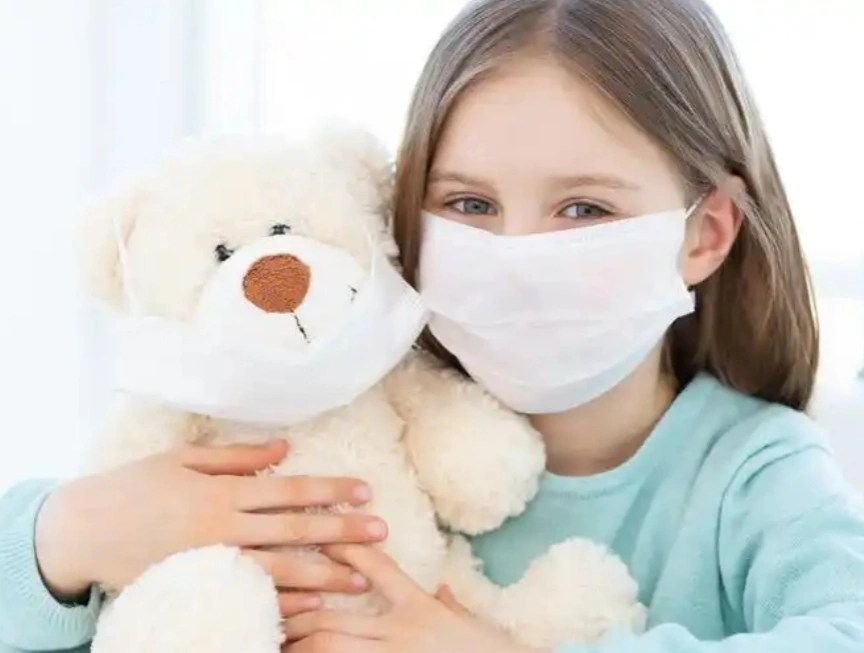There are numerous types of children's masks on the market, with significant differences in quality and price. So how can we choose masks that are both safe and effective for children? Don't worry. Next, we will provide you with a detailed interpretation of the standards and classification of children's masks to help you make a purchase easily

1.The Importance of Children's Masks
On May 6, 2020, China officially released the children's mask standard GB/T 38880-2020 "Technical Specification for Children's Masks" (referred to as the "Technical Specification") and immediately put it into effect. This standard is specifically designed for children aged 6 to 14, marking the birth of China's first children's mask standard.
【Standards and Classification】
According to the performance characteristics of masks, the GB/T 38880-2020 standard released in 2020 classifies children's masks into two categories: protective masks (F) and sanitary masks (W). Among them, children's protective masks (F) are designed to prevent the inhalation of particles such as microorganisms, droplets, dust and pollen, providing strong protection. They are usually designed in a three-dimensional shape and are suitable for moderately polluted or potentially moderately risk environments, such as stations, public transportation and supermarkets. Children's hygiene masks (W) focus on blocking the spread of microorganisms, droplets, dust and pollen and other particulate matter. They are mainly flat and suitable for low-pollution or low-risk environments, such as restaurants, classrooms and dormitories.
【Specifications of children's masks】
In addition, masks are classified into three sizes - small, medium and large - based on the head and face dimensions of children of different age groups.
2. Key points for selection and risk monitoring
In recent years, the customs department has conducted risk monitoring on the import and export of children's masks in response to the newly implemented technical standards for children's masks. During the monitoring, it was found that some children's masks had problems that did not meet the technical specifications, mainly in terms of particulate matter filtration efficiency, protective effect, breaking strength of the mask straps and their connection with the mask body, ventilation resistance, dry rubbing color fastness, pH value and appearance quality. Next, we will delve into the key safety project requirements and potential hazards in the technical specifications for children's masks.
【Particulate matter filtration efficiency】
The filtration efficiency of particulate matter is an important indicator for measuring the ability of masks to filter particulate matter and also the core standard for evaluating the performance of masks. The filtration efficiency of children's protective masks should not be less than 95%, and that of hygiene masks should not be less than 90%. According to the technical specifications, if this indicator does not meet the technical specifications, it will directly result in the mask being unable to effectively intercept particulate matter in the air, such as microorganisms, droplets, dust and pollen, thereby significantly increasing the risk of infection.
【The protective effect and strong connection】
The protective effect and the particulate matter filtration efficiency are on par and both are important indicators for evaluating the performance of masks. The protective effect is related to the fit of the mask components. The breaking strength at the connection points must meet the standard to ensure the protective effect. It reflects the mask's ability to filter out particulate matter in the air, such as microorganisms, droplets, dust and pollen, in a simulated daily activity environment. The better the protective effect, the superior the protective performance of the mask. This indicator mainly examines the tightness of the mask filter material and its surroundings, the breathing valve, and the connection points of each component. If there is leakage, it may cause bacteria, dust, etc. to enter the nasal cavity through the mask components or the gap between the mask and the face, thereby affecting the protective effect of the mask.
【Ventilation resistance and color fastness】
Ventilation resistance, which refers to the resistance encountered by the airflow when passing through the mask body, is an important indicator for measuring the breathability of mask materials. The ventilation resistance standard limits the impact of respiration. Color fastness ensures that the mask does not fade and avoids the potential harm of dyes to the human body. According to the technical specifications, the exhalation and inhalation resistance of children's protective masks are both limited to within 45Pa, while the ventilation resistance of children's hygiene masks must not exceed 30Pa. If the ventilation resistance is too high, it will directly affect the wearer's breathing condition. In mild cases, it may cause breathing difficulties, and in severe cases, it may even lead to asphyxia.
【pH value and appearance quality】
The pH value should be within the specified range to avoid skin irritation, and the appearance quality should ensure that there are no prints or dyes on the inner layer. The pH value of healthy skin is maintained within a weakly acidic range of 5.0 to 5.6. However, the technical specifications state that the pH value of children's masks should be between 4.0 and 7.5. If the pH value of a mask exceeds this range, whether it is slightly alkaline or strongly acidic, it may damage the skin's natural barrier, causing skin irritation and subsequently triggering adverse effects such as allergic reactions.
3. Consumption tips and purchase suggestions
When choosing masks for children, there are several key points worth paying close attention to:
【Purchase channels and packaging】
First of all, choose a reputable channel to purchase. It is recommended to give priority to purchasing from reputable e-commerce platforms or regular physical supermarkets, pharmacies and other channels to ensure the quality and safety of the products you buy. Secondly, carefully examine the packaging. In addition to confirming the basic information such as the product name, specification, manufacturer and production date, special attention should also be paid to details such as the product category and the standard number implemented. For instance, products that comply with the technical specifications for children's masks will clearly indicate the product category on their packaging, such as "Children's Protective Mask (F)" or "Children's Sanitary Mask (W)", and will also clearly print the standard number (GB/T 38880) and safety warning statements, etc.
【Appearance and Parameters】
Furthermore, one should carefully examine the appearance. Pay attention to the design shape, pattern, material and key parameter marking of the mask. First, look at the shape. Generally, children's masks that meet protection requirements are designed in a three-dimensional shape, while ordinary hygiene masks mostly adopt a flat shape. Second, check the pattern. The inner layer material of the mask that comes into direct contact with the skin should not be printed or dyed. This point needs to be particularly noted when purchasing. Thirdly, check the material. The mask should not have sharp points or edges, and the nose clip should be made of malleable material.
Finally, don't forget to check the parameters. Consumers should pay attention to the key parameters marked on masks, such as filtration efficiency, ventilation resistance, and ethylene oxide residue, to ensure that while focusing on the protective effect, they can also take into account the comfort and safety of use.
Due to the relatively weak cardiopulmonary function of children, the technical specifications for children's masks have more lenient standards in terms of breathing resistance and ventilation resistance, aiming to ensure comfort during wearing and avoid a feeling of stuffiness. At the same time, the standard restrictions on the use of chemical substances for children's masks are also stricter to ensure their safety in use.


 13-Aug--2025
13-Aug--2025